#iranian royalty
Text
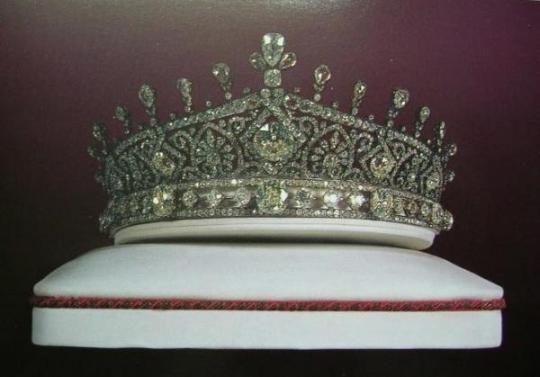
Empress Farah's Diamond Tiara ♕ Government of the Islamic Republic of Iran
108 notes
·
View notes
Text

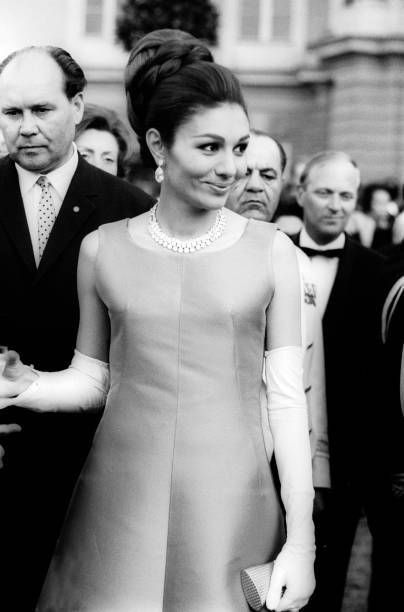
Farah Pahlavi in Berlin, 1967
3 notes
·
View notes
Text
Soon after the 1953 coup in Iran, this French Canadian news article connected the dots and concluded that the attack on Mossadegh’s government wasn’t quite as “spontaneous” as reported.
The Mossadegh Project
#iran#tehran#iranian#middle east#mossadegh#foreign policy#cold war#1950's#persian#britain#monarchy#ashraf pahlavi#princess#1953 coup#allen dulles#history#royalty#shah of iran#canadian#photo journal
0 notes
Note
How exactly did Hercules become connected to Vajrapani to being the protector of Buddha? And what’s his relationship of the Nio in Japan?
Katsumi Tanabe notes here that despite the widespread acceptance of the view Heracles influenced the early iconography of Vajrapani in Gandhara, there’s actually no consensus on how this phenomenon originally developed.
Full explanation under the cut.
For context: Greek iconographic types were commonly adopted in Central Asia - typically for Iranian deities (who especially in the east were closer to deities in the strict sense than to the Zoroastrian notion of yazatas). However, the logic of these associations was not necessarily as simple as interpretatio graeca resulting in adoption of iconography.
Nothing illustrates this point better than the fact Bactrians regarded Oxus as the king of the gods, but adopted the iconography of Marsyas for him, probably because it was a relatively widespread Greek image of a river god as opposed to some deeper analogy between their respective characters. There are also cases where iconography differs from what interpretatio would suggest - Tishtrya was seemingly associated with Apollo, but iconographically took after Artemis instead on Kushan coinage. Therefore, each case needs to be approached separately.
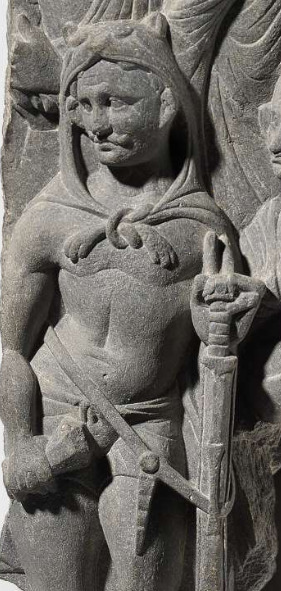
A particularly remarkable example of Heracles-like Vajrapani (British Museum; reproduced here for educational purposes only)
I don’t think there’s any need to undermine the transmission of iconography itself: it’s not hard to find representations of Vajrapani from Gandhara which basically look like Heracles holding a vajra (and sometimes a sword or a fly whisk) instead of a mace.
However, it's worth pointing out he's actually not depicted entirely consistently in Gandharan art. In addition to the numerous Heracles-like examples, there are also cases where he resembles Silenus or another satyr; Zeus (a fairly natural match given his typical thunderbolt attribute and Varjapani’s… well, varja); Hermes; Dionysus; Alexander the Great; or an ordinary Kushan in period-appropriate clothing. Interestingly despite Varjapani being considered a yaksha, no images of him actually resemble the conventional depictions of yakshas from further south, which at the time typically drew from Indian royal iconography.
Interestingly it seems only two other Buddhist figures were patterned on Greek ones in Gandharan art, Panchika (for unknown reasons depicted in the form of Hermes) and Hariti (who borrowed Tyche’s cornucopia though this was not a consistent attribute).
Ladislav Stančo in his monograph Greek gods in the East: Hellenistic Iconographic Schemes in Central Asia present a rather bold theory: the adoption of Heracles-like iconography for Varjapani was less a case of syncretism and more the result of artists familiar with Hellenistic standards being hired by Buddhists and repurposing standard forms their were familiar with already. They would often be operating only on vague descriptions of Buddhist figures they heard from the commissioners. With time these would become a standard in their own right.
However, there are other theories too - I’ll simply summarize here what Karl Galinsky wrote in his article Herakles Vajrapani, the Companion of Buddha from the recent Herakles Inside and Outside the Church: From the first Apologists to the end of the Quattrocento.
Obviously, the fact both figures are characterized by their strength is a commonly cited factor. Another possibility is that Varjapani might have absorbed Heracles’ iconography after Kushan kings started promoting Buddhism because of a shared association with royalty. Yet another option is that Varjapani was a traveling companion of the Buddha which made him a good match for globetrotting Heracles. Finally, the fact they could both fulfill many distinct roles could be an argument in favor of identification in its own right (Galinsky seems to support this proposal himself).
In the past arguments have been made that Heracles’ iconography survived in Central Asia through Vajrapani as late as in the sixth and seventh centuries (source; note the article still follows the vintage theory Vajrapani was in part a Buddhist adoption of Zoroastrian fravashi, which I haven’t seen validated in anything recent), based on a mural showing a figure wearing a lion skin from the Kizil Caves. There is a recent article which tries to salvage this point, but the author admits this is all highly speculative.
In any case, by the time Varjapani reached China his attire started to change, and he came to be shown either with a bare chest or in armor, but no longer nearly naked like Heracles. He also commonly has the exaggerated facial features you’d expect from yakshas and other similar beings, as seen for example on a mural from the Mogao Caves:
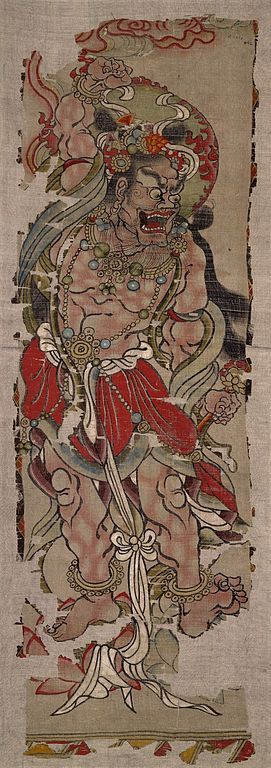
(wikimedia commons)
Vajrapani appears in later Buddhist tradition in an assortment of tales which typically portray him subduing demons or unruly deities on behalf of the Buddha. None of them really show much Greek influence, though - I don’t really think Heracles is known for fighting Maheshvara, and in turn Vajrapani never got to free Prometheus or complete any of the twelve labors (though we know the myths themselves were known in Central Asia); iconography and mythology could be transmitted independently of each other.

A Japanese depiction of Varhapani - note the third eye (Art Institute Chicago; reproduced here for educational purposes only)
In Japan, Varjapani (Kongōshu, 金剛手; Shukongōshin, 執金剛神; Kongō-rikishi, 金剛力士 etc.) only appeared after a long process of transformations in Mahayana tradition, and his depictions generally reflect Chinese artistic conventions.
The Niō, literally “benevolent kings”, are a double manifestation of him and similarly reflect a Chinese model. I don’t think there’s any real reason to claim there’s all that much Heracles in them. JAANUS notes that multiple identities could be assigned to them, though none particularly consistently. There’s a case to be made that the fact they are most commonly statues guarding temple gates is basically the core of their character judging from the proliferation of legends which revolve around this (for a Chinese example see here, Japanese ones are mentioned briefly in the linked JAANUS entries). They also only became widespread in the Kamakura period, centuries after even the boldest theories suggest the survival of some memory of Heracles in Buddhist sources.
To put it differently: both Heracles and Nio are undeniably parts of Varjapani's history, but they are not necessarily a part of each other's history just because of that.
22 notes
·
View notes
Note
72 :)
72’s name is Anahita, and she was named after the Iranian goddess of royalty, war, and fertility. her favorite flower is a Hyacinth, and her girlfriend’s name is Calypso. they live by a lake and have a garden and a few animals. they have two chickens, stray cats that come and go, and a cow named Bessie. <3 might draw them
#ocs#oc lore#lesbians :o#shut up i don’t take a lot of names from mythology what r u talking abt#ask#send asks#ask me anything#asks open#ask me stuff#ask abt my ocs#PLEASE
6 notes
·
View notes
Text
AIT or Aryan Invasion Theory (debunked): A superior "race" of white, horse-riding Aryans invaded the areas of the inferior and primitive Indus Valley population, which included the Dravidians (but actually no one said that the IVC was a pure, dark-skinned Dravidian civilization so idk where that idea came from), and civilized them.
AMT or Aryan Migration Theory: A group of usually horse and chariot-riding nomads and pastoralists usually called the Aryans migrated from the Indo-Iranian region to India and mingled PEACEFULLY with the population of the late Indus Valley population (who were already highly advanced, as we know), by which time the IVC was beginning to collapse, possibly due to change of climate and rain patterns (still not sure yet), and hence the people were abandoning these settlements spreading across the subcontinent. These Indo-Aryans on arriving mixed with this population and shared their genetics, art and culture with each other, which led to the introduction of Sanskrit and Vedic culture in India.
To any leftist who keep regurgitating the former busted myth, please stop. You look stupid. And to any rightist who keep using AMT as AIT to debunk it, they're not the same. These two theories have a sky-ground difference.
The previous one makes Aryans look evil. That they were some high-level royalty who invaded India. But, in fact, they were regular people, regular migrants, just how every migration used to happen 3000-4000 years ago. Like I said, most of them were nomadic settlers.
Sure, later on, the varna system came into existence and this was the beginning of a hierarchical structure in India for the first time (since during the IVC there wasn't any sort of social hierarchy according to current sources). But who's to say it was ONLY the Aryans? Remember. They're NOT a race. They're a particular group of people. And by the time the varna system was introduced already a hell lotta intermixing had happened. Hence it wasn't JUST the Aryans (history and especially anthropological and genetic history is not that black and white LMFAO), because it was a term for 'noble', not some kinda "righteous clan" or something. Idk why people keep thinking of it as a race lol. I thought that was already debunked with the AIT.
As for the indigeneity of the Aryans, technically no one is indigenous. Many of the adivasi and non-adivasi tribes came AFTER the Indus Valley Civilization. So the "who came first" logic doesn't really work at all. (There might've been many that came before as well, who knows. Point is, again, it's all a migration salad at the end of the day)
adjective
indigenous (adjective)
originating or occurring naturally in a particular place; native:
This is the Google definition of indigenous. If we take THIS into account, there would be SEVERAL groups of people involved, instead of just one, like the IVC people, a few of the oldest nomadic tribes, mixed Indo-Aryans, etc. But I'm not gonna call ANYONE indigenous, or not indigenous. Because guess what, none of the humans are really indigenous to any place apart from the African continent. Also the Aryan migration led to the rise of a LOT of genetic subgroups, which was a key factor in leading to the most confusing anthropological history of the Indian subcontinent. It has a fuck ton of genetic markers and groups and subgroups, it's wildly confusing and historians are still trying to figure out every kind of intermixing that has happened. So STOP fighting over who is indigenous or not LMAO. Because guess what, we can never truly assert the indigeneity of a migrant species such as humans. (Yes we do call Native Americans the indigenous people of Americas, or the aboriginals the indigenous people of Australia and the Australasian archipelago, but they were also migrants at some point of time. Now before anyone says I'm disregarding the indigeneity of these groups, I'm not. All I'm saying is that we shouldn't CARE who's indigenous and who's not, because unlike the case of Americas and the Australasian islands, Aryans didn't INVADE India. They were simply another set of migrants, JUST like the IVC people, who also came from the middle-eastern region, and JUST like the adivasi tribes, who migrated from mostly the African and Australasian regions, probably, not sure again.)
I'll link the genetic studies done below because they explain it all way better than I can (and these research papers may also correct some of the incorrect statements I might've unnoticeably or ignorantly made in my own paragraphs so yeah):
Hence, at the end of the day, idk why we're banging our heads on the walls over ONE SIMPLE MIGRATION, which was NOTHING DIFFERENT THAN ANY OTHER MIGRATION. Migrations happen ALL THE TIME. Get over it, BOTH the sides of the political wings, and live in harmony lmao. The Aryans and Dravidians AREN'T RACES. They were just certain groups of REGULAR ass people jeez.
History is a complex subject, and the more evidence we find, the more we would know about our past. I have literally nothing against any of the political wings, but I do want to keep the current theories (which are NOT synonymous to hypotheses btw) and facts straight. I'm once again not saying these facts will never change, because that's not how history works. Maybe in the future, we might find out something completely different about India's past. But remember, whenever we talk about our country's past, we should keep it unbiased, unopinionated, and definitely factual and objective, without including our own views (both political and personal) into it. Interpretations? Sure. But they should remain at ONLY interpretations at best, and only the solid evidences should be claimed as facts.
#hindublr#aryan migration theory#indo-aryans#history#indian history#indus valley#indus valley civilization#desiblr#desi tumblr#desiposting#bharat
9 notes
·
View notes
Photo

Ancient Iranian Carving Seized at a London Airport
An ancient sculpture illicitly carved from a rock relief in Iran will soon go on display at the British Museum before being repatriated to the National Museum in Tehran.
Carved in calcareous limestone, the sculpture depicts a standing male figure with an ornamental headdress. The piece likely hails from the 3rd century C.E. when the Sasanian Empire ruled greater Iran, according to the Guardian.
“It belongs to a period when Iran was the center of a powerful empire stretching from Syria to the Caucasus and Central Asia, and with its capital at Ctesiphon, south of present-day Baghdad,” St. John Simpson, an archaeologist and senior curator the British Museum’s department of the Middle East, told the paper. “The Sasanians were powerful rivals of Rome, and famous today for their fine silverwares and cut glass.”
The relief was seized at the Stansted airport outside of London, where border officers pulled the item aside because of its suspicious packaging—an unpadded, slapdash crate held together by nails. Inside was the carving, which had recently been excised with an angle grinder.
“We almost never come across a case of something being cut out of the ‘living rock,’” Simpson said. “That’s a level of brutalism that surpasses anything.”
Exactly where the carving came from remains a mystery, though context clues may help to narrow the list of potential locations. Roughly only 30 Sasanian rock reliefs are known to exist today, and almost all them came from the small Fars Province in southwest Iran.
Simpson suspects it “comes from somewhere in the Shiraz area” of the province. “Stylistically, it is similar to one known in the region,” he explained. “I think it probably is part of a big sequence. There might be more bits out there.”
The subject of the piece is similarly difficult to determine. “The lack of an inscription makes it impossible to identify the person depicted, but his dress and diademed headdress signifies him as a person of high rank,” the curator said. “His gesture of greeting and submission, with a raised bent forefinger, is a feature of Sasanian art when figures are in the presence of royalty, which suggests that this was part of a larger composition, with the king to the right and perhaps other figures behind.”
Interpol and the National Crime Agency have both investigated the object, but no arrests have yet been made. An internet auction site in the U.K. was listed as the package’s destination address, but the company claimed not to be expecting it.
Because of its poor padding, the relief broke in two pieces during transport. Conservators have since put it back together.
“The British Museum is committed to contributing to the preservation of cultural heritage in the U.K. and globally, partnering with law enforcement agencies to identify illicitly trafficked antiquities,” read a statement from the museum. “Objects seized in this way are brought to the British Museum for identification and cataloguing.”
The London institution obtained permission from the Iranian government to display the carving for three months. After that time, it will be repatriated to the National Museum in Tehran.
Simpson called the newly repaired piece “stunningly attractive,” before weighing in on its potential worth.
“The valuation could be anything, really. We’re talking £20 million to £30 million-plus,” ($25 million to $37 million) he said. “There’s never been anything like it on the market.”
By Taylor Dafoe.
#Ancient Iranian Carving Seized at a London Airport#the sasanian empire#rock releif#rock sculpture#ancient artifacts#archeology#archeolgst#history#history news#ancient history#ancient culture#ancient civilizations#stolen#looted
48 notes
·
View notes
Text
Hi lovelies,
A few days ago this new Bollywood movie called Pathaan, starring Shah Rukh Khan and John Abrahams, came out and so obviously I HAD to go and watch it. But fun fact about me is that I am literally a melting pot of different cultures. My dads family are Indian-Kenyan. My mums family were initially (back in the 5th-7th century) a family of Jewish royalty in what is now Afghanistan (which is actually pretty cool). They converted to Islam some time later and became part of a very particular Afghani tribe called the Pathaan (also another reason I had to watch this movie). Over the course of the next few centuries they migrated from Afghanistan to India, before being forced into Pakistan because of colonialism. Throughout all of this, my mums branch of the Pathaan tribe stuck together and so even still, my mum’s family in pure Pathaan, but I’m only half Pathaan because my mum married out. However, me being me did some deep diving into this because it’s actually pretty cool that my family tree can be traced back that far. Okay so at this point you’re probably wondering how on earth this related to Classics, but I found out that the Pathaan langue (Pashto) is actually about 2500 years old, which makes it about the same age as Latin and therefore a classical language! And so today I thought I would tell you a little bit about Pashto.
The Pashto language belongs to the Indi-Iranian language family and is mainly spoken by the ethnic communities of Afghanistan and western provinces of Pakistan, which is partially inhabited by Pashtuns (aka Pathaan’s). It is also still the native language of the indigenous Pathaan people. The language is said to have originated in the Kandahar district of Afghanistan and is said to be one of the two national languages (the other being Dari, a Persian language).
The vocabulary of Pashto has actually not been borrowed or derived from other languages, which is extremely rare for any language still spoken in a modern setting. Many of its lexis do, however, relate to other Eastern Iranian languages such as Pamir and Ossetia.
The exact origin of the Pashto language and the Pathaan tribes are unknown, but the word ‘Pashto’ derives from the regular phonological process. Nevertheless, the Pathaan are sometimes compared with the Pakhta tribes mentioned in Rigvenda, around 1700-1100 B.C., apparently they are the same people that the Greek historian Herodotus referred to Paktika (a northern province in Afghanistan). However, this comparison appears to be due in large part to the apparent similarity between their names, despite the fact that etymologically it can’t really be justified. But there are some archeological compilations and historical data and so the majority of researchers now believe that the Pashto language is around 25000 years old.
Herodotus also mentions the Paktika ‘Apridai’ tribe but it is unknown what language they spoke. However, Strabo (who lived between 64 B.C. and 24 C.E.) suggests that the tribes inhabiting the lands west of the Indus River were part of Ariana and to their east was India. Since about the 3rd century B.C. and onwards from that, these tribes were mostly referred to by the name ‘Afghan’ (or ‘Abgan’) and their language as ‘Afghani’.
Many historians and scholars believe that the earliest piece of written Pashto work dates back to the 8th century. However, a lot of history outside of the western empires lacks the same clarity and information and so even this is highly disputed. However, during the 17th century, Pashto poetry became very popular amongst the Pathaan.
To be honest, there isn’t a whole lot of information on the Pashtun language or the origin of the Pathaan, other than that they have been around since the B.C. But it’s pretty cool to me that my families culture has such a long history. This entry was pretty special to me so hopefully you all enjoyed it and I hope you all have a lovely rest of your weekend!
~Z
#classical studies#classics#ancient rome#ancient greece#dark acamedia#ancient world#history#afghanistan#pakistan#shah rukh khan#pathaan#deepikapadukone#origin story#sorry guys#this#is just#me rambling#im a nerd#john abraham#is like#my childhood#celeb crush#also
26 notes
·
View notes
Text

Arslan's such a beautiful child. Like, how beautiful did his birth parents have to be to produce such a pretty kid?? He's so pleasing to the eye.
Very huggable too.

They're kinda alike in that they're Done™ with royalty and dealing w interactions and whatnot while still caring about the country and its people. I wonder how well they knew each other before Narsus left court, they're talking like friends here but that might just be bc Kubard is Like That?

Shapur :(
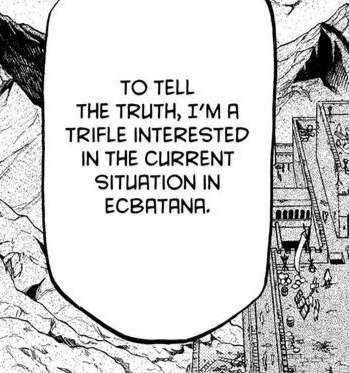

I don't think Gieve even got to Ecbatana, he shadowed the army until St. Emmanuel and then fucked off to Mt. Damavand?
Imagine an alternate scenario where he does get to the royal capital and somehow sniff out that uh oh Andragoras is OUT and relaying the info to Narsus... I wonder what would've unfolded differently if it had happened.


(as far as I could tell there was no Zoroastrian deity/divinity of prophecies specifically so I had to get creative and use Zoroaster/Zarathustra, an Iranian prophet and founder of the Zoroastrian religion, I imagine the Parsian faith must have an equivalent to him considering it's based on Zoroastrianism okay that's enough rambling oop)

Of course not!! The day I rely on Rajendra is the day I truly run out of viable options.

No commentary.

Interior ref!!
#arslan senki reread#arslan senki#the heroic legend of arslan#heroic legend of arslan#arslan#kubard#narsus#daryun#gieve#I wonder if I sufficiently delivered on the beauty regarding Arslan's OC parents in my AU LOL
6 notes
·
View notes
Text


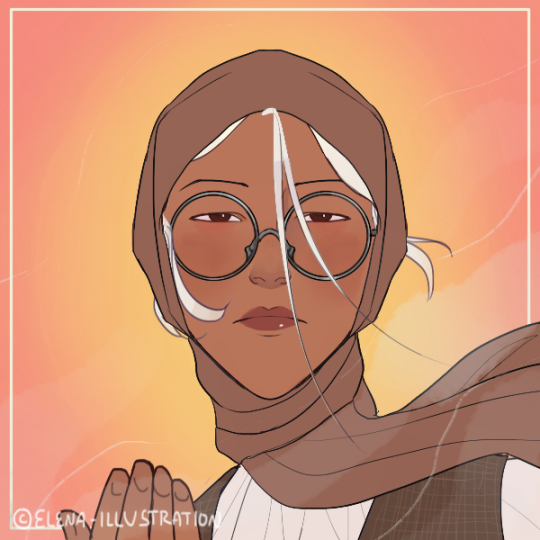



actually fuck it, here are all my senshi from when i was 13 and determined to make the best, most mature, serious sailor moon fanfic ever, which i only ever wrote one chapter of
sailor charon didn't have strongly outlined powers, but charon had two "rivers" on its surface, which were actually her two massive pigtails. she didn't move or anything. queen serenity had sealed away charon as a prison planet and theoretically she would've been pissed about that but i think she more or less did villain shit for the lulz because i don't think i actually connected her motivations to her origin story. idk she was just kind of there. this stuff was mostly faux-deep.
-sailor psyche was the leader and she was posing as a lost princess from the silver millennium because usagi was reawakening a bunch of reincarnated senshi and she was trying to scope them out to get them on their side. she had been in love with endymion because of course she had been. while on earth, she posed as super nice and a classic princess type, but actually she was super manipulative and evil and shit. i think her starseed would get corrupted or something. she was gaslighting the four charon senshi. her power was emotional manipulation. she reincarnated in japan and her earth name was shinju.
-sailor halley was the senshi of temperature and she had been unhappy during the silver millennium because she was treated less than because she was a earth-born human and also because she was sent off to space to guard the solar system from the outskirts. she was either kunzite's little sister or his niece. there was a thing where all of them had been harvested by galaxia but usagi had reincarnated everyone, i guess. this broke the magic sealing them on charon and the reincarnated on earth. she was reincarnated somewhere in the middle east; i think she might have been turkish or possibly iranian. she was like super serious and solemn and liked engineering. in tragic love with mercury. kunzite and the other generals were reincarnated on earth, so she got to chill with him. may have had a sword?
-sailor mimas was zoisite's identical twin sister and her power was reflections, which somehow meant that she did weird dimension hopping stuff. her weapon was a mirror. she was like the bubbly, quirky one but charon killed her monster of the week husband and blamed it on usagi and then she was supposed to go super vengeance mode until she tragically died. i think she reincarnated in ireland?
-ganymede had a magic cup that could make any liquid, so she mostly attacked with poison and acid. she was a handmaiden of the jupiter royalty and i think she resented having to leave earth. she was the cute tomboyish girl. she was nephrite's cousin and i think she reincarnated in mexico. her bestie was rhea.
-rhea was jadeite's...???? i don't think i ever decided. her motivation was that her mentor sailor janus died (i think someone betrayed her???) and i don't remember the circumstances, but it meant that she hated the moon royalty. her power was crystals. she was a huge alpha bitch with a rivalry with halley but she also had like some noble stuff going on with how she wanted to keep the memory of janus alive. she wore the mask of janus and i think she may have had a crystal spear???? reincarnated in china.
i honestly do not remember what most of the plot was going to be because i mostly daydreamed very dramatic space politics and then never wrote it. naru was an important part of it though because she was awakened as sailor galatea, the stone senshi, and she got a very cute mint green outfit with special ribbons.
2 notes
·
View notes
Text
closed starter. — javier wagner. @dxncingxnmyown
location: the grand dining room. time: 8:30pm.
despite his paranoia about their intentions, osiris finds himself grateful for the french royalty's hospitality; he has to admit that french food lives up to its delicious reputation. it wasn't unlike him to take meals in the foyer of his family's apartments, but tonight, his wife and children had insisted on attending the nightly feast with the rest of the palace's guests, and he'd felt obliged to join them. he wished he hadn't — the room far too crowded and too loud to truly enjoy himself or the food. so, decidedly, he hates this. he'd wanted to go home from the moment they left, but now he wants nothing more than to feel the heat of the desert, to stand in the red glow of the iranian sun.
as it happens, FATE, that fickle thing that's been toying with him for twenty-five years, rears it's ugly fucking head once again, and he spots the KING OF PRUSSIA at the far end of the table, just as he's about to excuse himself and make a beeline for the exit. and — well — typically, he's not the type to engage. in fact, most of the time, he'd rather sit through hours of political niceties as a silent observer than actually do any speaking. but — his conversation with amin a few nights ago comes to mind. the prospect of setting things straight, of formally drawing a line between his family and this foreign one ... it sets his spine alight. he informs his family he'll return shortly, and slowly makes his way over to the other end of the table.
easily sliding into the seat across from the king, he examines the other man's face, eyes narrowed in passive suspicion. scruffy. a bit unkempt. YOUNG. too young to be the father of the princes & princesses, so he must be their eldest brother. interesting. ❝ if i am correct in assuming you might be the ruler of the prussian kingdom, ❞ he begins, his tone contemptuous — he won't afford the other man the respect of knowing who he is immediately. ❝ i believe we may have something important to discuss. ❞ tentatively, he lifts his hand from his lap and extends it over the table. only he could make a handshake look threatening. ❝ osiris qājār. sultan of iran. ❞

5 notes
·
View notes
Text
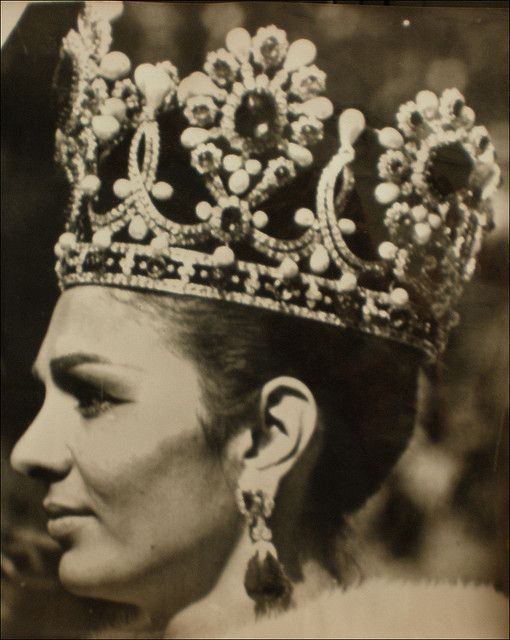
Coronation Crown of Empress Farah ♕ Government of the Islamic Republic of Iran
54 notes
·
View notes
Note
Just finished Rasio Silence for the second time, I'm literally crying!😭😍😭 Do you have any good book suggestions? I am 13 years old, love to read, bisexual, a girl and my favorite book is probably Radio Silence. 🏳️🌈❤️
First of all you have great taste in books if you love radio silence😌 first obviously Alice Oseman’s other works! And then get ready because I have quite a few recommendations hehehe (I always hoped this day would come)
- The Sky Blues (by Robbie Couch): I read this a while ago so I don’t remember the intrigue in detail but it’s very sweet and the main character is gay
- If you could be mine (by Sara Farizan): this one is wlw with a pretty sad ending but the story is beautiful, set in Iran, best friends to lovers who are trying to find a way to be together
- Tell me again how a crush should feel (by Sara Farizan): also wlw and the main character is Iranian American, I don’t remember that much of the plot cause I read it quite a while ago but I remember it was fun!
- Criers’s war (by Nina Varela)/Iron Heart (by Nina Varela): beautiful fantasy duology with wlw ennemies to lovers! I’m absolutely in love with these books and they’re criminally underrated
- The passing playbook (by Isaac Fitzsimons): trans gay main character who just wants to play on the boy’s soccer team of his new school (this one is so sweet)
- Cemetery boys (by Aiden Thomas): also trans gay main character but this one is fantasy and also Hispanic Americans
- Her royal highness (by Rachel Hawkins): boarding school, royalty, ennemies to lovers, but make it sapphic
- She gets the girl (by Rachael Lippincott and Alyson Derrick): this is also a sapphic ennemies to lovers, where one of the main characters has to help the other (who is extremely shy) flirt with her crush to prove to her ex that she can help other people
- If this gets out (by Sophie Gonzales and Cale Dietrich): this one is mlm and has one of the best depictions of internal struggle to discover your queer identity, also bonus points for talking about fan culture and music industry
- I kissed Shara Wheeler (by Casey McQuiston): I haven’t actually read this one yet but I checked and it’s appropriate for your age and my best friend just read it and loved it so it’s on my tbr
There you go! I hope you find something you enjoy reading, and if you like any of those books let me know!
#queer books#queer book recs#queer book recommendations#book reccomendations#lgbt representation#lgbtq books
3 notes
·
View notes
Text
The very first nail paints appeared in ancient Egypt, where plant-based henna was used to stain nails yellow or orange. Colored nails signified social status, and the deep, dark shades created from kermes (a dye made from crushed beetles) or similar substances were restricted to royalty and their courtiers. Nefertiti’s preferred nail color was reportedly ruby red, while Cleopatra’s nails were stained a rust-red hue. Nail painting was also practiced by the ancient Babylonians, who considered well-kept nails to be a sign of civilization. Even Babylonian soldiers were reported to have painted their nails before going into battle (archaeologists have uncovered intricate manicure sets at the royal tombs at Ur).
In Iran, henna was used to stain nails and by both men and women to strengthen and color hair (including beards). In some cases, lime and salt ammonia were added to the henna to darken the patterns. Henna was also used to paint intricate patterns on the hands and feet as a mandatory part of Iranian wedding ceremonies—a practice still popular today.
China was a crucial and early adopter of nail painting, too. The colors used changed from one dynasty to the next, with silver and gold preferred during the Zhou dynasty (c. 600 BC). By the Ming dynasty, red and black were the colors of choice, made from a blend of beeswax, egg whites, gelatin, vegetable dyes, and gum arabic, with flower petals (mashed and used with alum) added as the colorant, and the whole lot mixed together to make a basic nail polish mixture that would be applied and left to dry for several hours.
In Celtic Britain, rosy nails were prized and a red-hued effect was achieved by coating nails with a mash of madder root that was left to sit for a while to stain them.
2 notes
·
View notes
Text
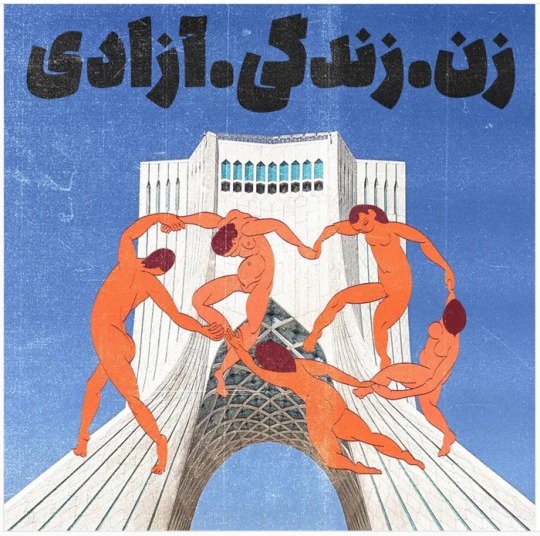
Jalz
Poster art
"The Azadi (“Freedom”) tower is one of Tehran’s most recognisable 20th-century landmarks. Built under the reign of the last Shah of Iran, it was finished in 1971 and named Shahyad Tower (Shah Memorial Tower). Following the 1979 revolution, associations with royalty were swiftly removed. Now, it’s being associated with freedom from the very regime which renamed it.
The Iranian graphic designer Jalz has drawn on the tower for one of his designs in support of the recent protest movement. “This is the sole image of Iran’s freedom,” argues Jalz. Combining an image of the tower with Matisse’s dancers and the “women, life, freedom” protest slogan which is so central to the movement, he wanted to complete the sense of freedom for the female body."
– From ‘Something in me sparked’: the Iranian women using art to protest, The Guardian
4 notes
·
View notes
Photo
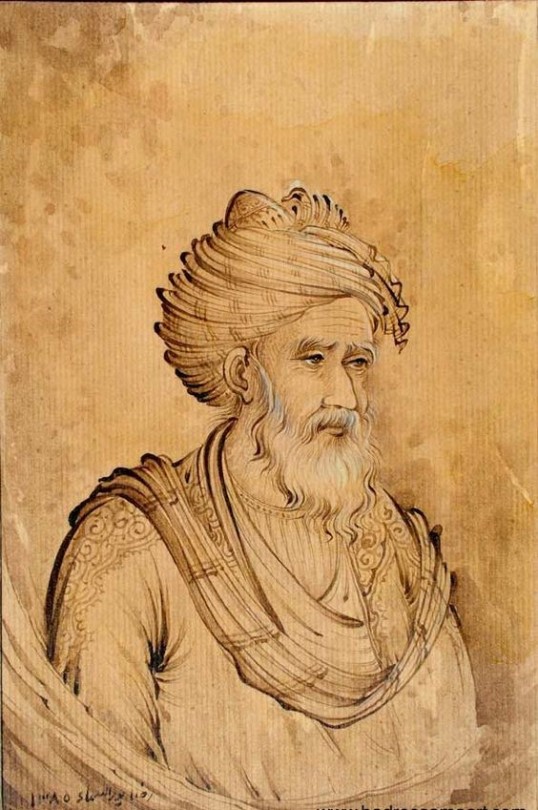
Abu Rayhan Muhammad ibn Ahmad al-Biruni a/k/a Al Biruni (973 - 1050) was an Iranian scholar and polymath during the Islamic Golden Age. He has been called the "founder of Indology", "Father of Comparative Religion", "Father of modern geodesy", and the first anthropologist.
Al-Biruni was well versed in physics, mathematics, astronomy, and natural sciences, and al distinguished historian, chronologist, and linguist. He studied almost all the sciences of his day. Royalty funded Al-Biruni's research and sought him out. Al-Biruni was influenced by the scholars of other nations, e.g. the Greeks, from whom he took inspiration when he turned to philosophy. He knew at least six languages. He spent much of his life in modern-day central-eastern Afghanistan.
In 1017 he travelled to the Indian subcontinent and wrote a treatise on Indian culture titled Tārīkh al-Hind (History of India), After exploring the Hindu faith practiced in India. He was, for his time, an admirably impartial writer on the customs and creeds of various nations, his scholarly objectivity earning him the title al-Ustadh ("The Master") in recognition of his remarkable description of early 11th-century India.
3 notes
·
View notes